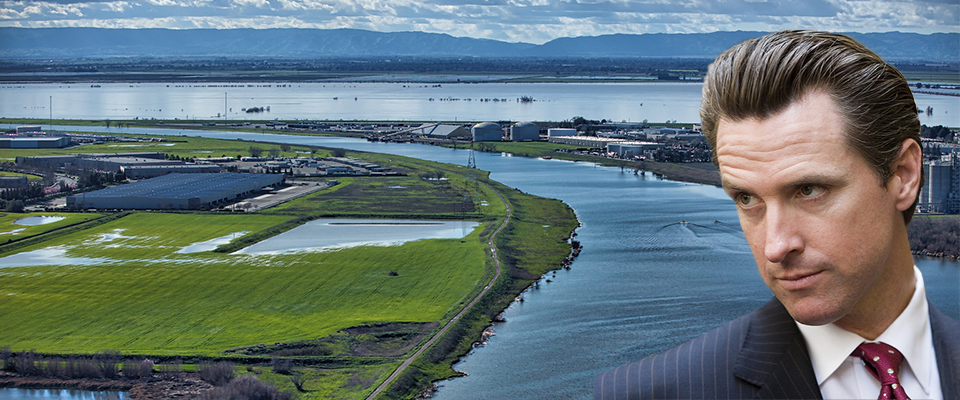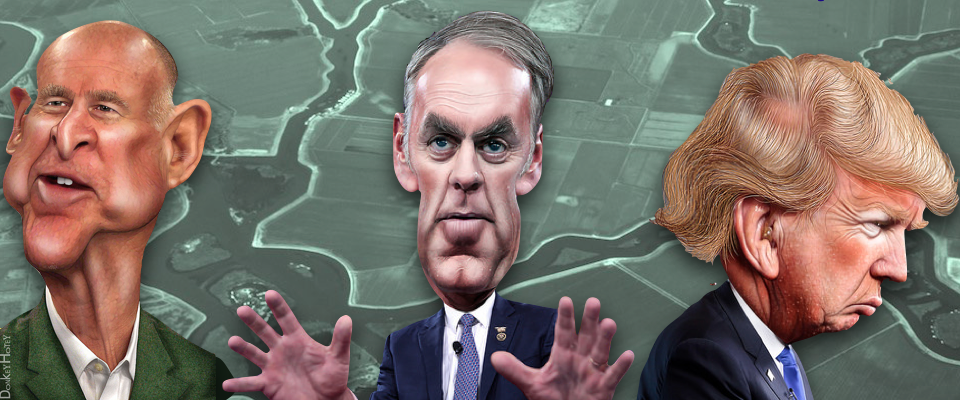Like many before him, California Governor Jerry Brown has vowed to “fix” the Sacramento-San Joaquin Delta, that vast and beleaguered wetland east of San Francisco Bay that is a source for much of Southern California’s water, an agricultural powerhouse, and a nursery for valuable fisheries.
The root of the problem, of course, is the number and degree of demands on the Delta. There are too many stakeholders and too little water, so nobody ever gets what they want, and often they don’t get what they need. Brown’s solution is the Delta Tunnels, a revised version of the Peripheral Canal that he pushed during his first gubernatorial tenure in 1980s. Like the Canal, the Tunnels are a conveyance system that would shunt water from the Sacramento River to Southern California, avoiding the direct pumping from the south Delta that now occurs at great expense to native fish.

But the problem with California’s water is bigger than the Delta or the Tunnels, says UC Berkeley adjunct environmental engineering professor Roger Bales. Information, he maintains, is the bedrock issue. The lack of it, that is. Not enough is known about the real time state of California’s water resources. There are too few points of measurement and poor access to the data that does exist. Stream flow is monitored inadequately; groundwater basins are barely monitored at all. No one truly knows who is using water, how much and when. It’s all largely rule of thumb and Kentucky windage.
That must change, says Bales—if for no other reason because the state mandated it last year with AB 1755, also known as the Open and Transparent Water Data Act. So Bales and colleagues at other UC campuses and the California Department of Water Resources are researching ways to provide managers with effective mechanisms for quantifying and tracking the state’s water, thus satisfying AB 1755’s requirements.
Central to such an effort is better water accounting, Bales says.
“We don’t have accurate numbers on precipitation in many important watersheds, and we don’t measure groundwater pumping to any great degree. We really don’t know how much is going in and coming out. We need better data on instream flows and water quality. Further, we don’t know how surface water and groundwater interact; the impacts of groundwater pumping on stream flows, for example, or dam operations on ground water recharge.”
That means we need to expand both the number of measurement points and the frequency of measurement recording. That said, optimal frequency may vary depending on the type of measurement.
“If you’re measuring a flooding river, you might want measurements that are hourly or even more often,” says Bales. “If you’re measuring groundwater basin pumping, monthly measurements might suffice.”
But it’s not just additional data that’s needed; it’s also imperative to expedite the flow of data to various water managers, simultaneously ensuring that the data they get is the data they need.
“Part of the problem is that different water managers need different datasets to do their jobs,” says Bales. “For instance, a hydropower operator generally needs different data than someone managing groundwater pumping.”
“Our water rights database is extremely primitive,” Bales says, “and that causes lots of uncertainty in water decision-making.”
Still, observes Bales, there are the times that disparate managers need the same data, or they might want to share interesting facts with each other or end users or researchers, only to find there’s no easy way to move the information around. It’s not just that the information is relatively scant (it is); it’s also stored in different and isolated “buckets” by different agencies.
“Ideally, you’d have a web interface that contains all the buckets of information maintained by different agencies,” Bales says. “They’d be connected, and available to anyone using the interface. You could pull or share information from one bucket or another as needed.”
Water rights also add to the current confusion, says Bales. California’s water distribution is governed by a Byzantine set of rules that is not entirely clear in concept or execution to anyone, including water law attorneys and the courts. It’s unwieldy and confounding even when water is abundant, and potentially disastrous during drought, when scant supplies must be divided among clamoring stakeholders.
“Our water rights database is extremely primitive,” Bales says, “and that causes lots of uncertainty in water decision-making. It needs to be updated and incorporated [into an interactive data interface] with all other available information.”
The UC/DWR water data team will report on its findings this fall, says Bales. In the meantime, what about the Delta Tunnels? Are they a good idea?
“I’m not an expert on the Tunnels,” Bales says, “but I think if we’re going to have a chance of meeting the three co-equal goals set out for the Delta by the State: maintain fresh water supplies for farms and cities in the Delta, sustain fisheries and wildlife in the Bay-Delta estuary, and continue water deliveries south of the Delta. We’re going to need some kind of trans-delta conveyance system. I’ve seen alternatives proposed, but there’ll be trade-offs no matter which option you choose. Right now, Brown’s plan is the only one on the table, the only one that seems like it may have enough political support to get through. Certainly, depending on how it’s operated, there could be risks [to Delta ecosystems]. But compared to other places, California has a history of relatively good government. So maybe [the Tunnels] wouldn’t dewater the Delta.”




















